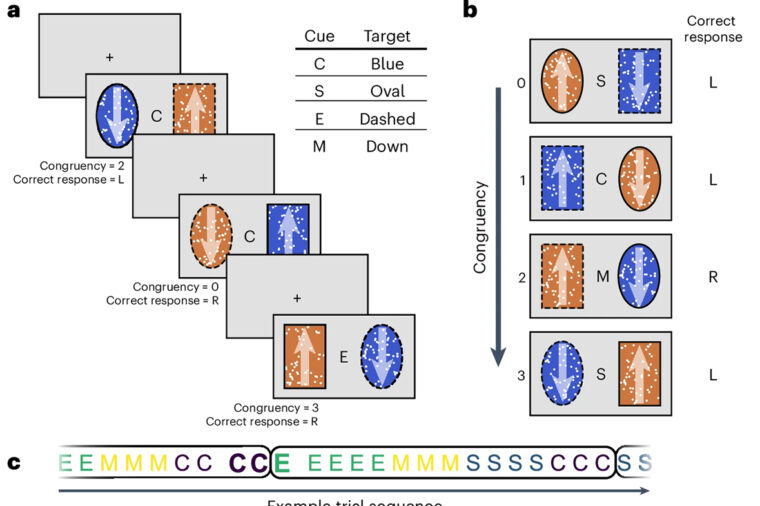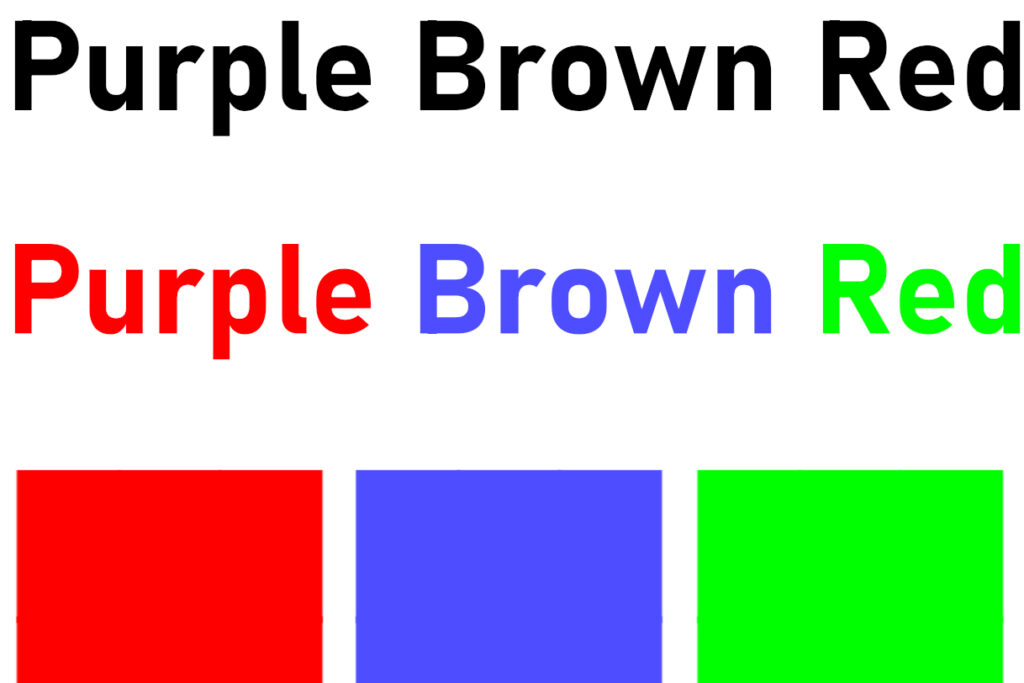
Imagine watching a speaker and another person nearby is loudly crunching from a bag of chips. To deal with this, a person could adjust their attention to downplay those crunch noises or focus their hearing on the speaker. But understanding how human brains do this has been a challenge.
Now, with a new neural network model, researchers at Washington University in St. Louis have a better tool to uncover what brain mechanisms are at play when people need to focus amid many distractions.
The model, now published in Nature Human Behaviour, demonstrates that people focus not by concentrating extra hard on a subject, but by ignoring inputs that were distracting in the past.
"Previous work showed that when people encounter a very difficult task, they adjust their attention to make them impervious to new distraction," said study author Wouter Kool, an assistant professor of psychological and brain sciences in Arts & Sciences at WashU. "However, it remained unclear how they adjusted their attention."
It's not that people may not do both forms of attention control - concentrate and reduce distractions - but how they do that can be affected by the difficulty of previous tasks.
"In our work, previous difficulty also clearly affected their sensitivity to current difficulty," Kool said, summarizing their findings.
The key innovation in this work is that usually researchers study this problem with only one source of relevant information and one source of distracting information.
An example of this older work is the Stroop task, which includes a list of words for colors that can match or not match the color in which the word is printed.

By investigating the delay in reaction time when participants are asked to name the color of mismatching words, researchers have created simple neural network models to understand how humans focus on tasks. But again, that's one distraction, one task. Kool's postdoctoral researcher Davide Gheza wanted to change it up.
"We increased the sources of distraction, mimicking a cocktail party or a conference meeting," Gheza said.
In contrast to the Stroop task that involves simple colored words, their task requires to choose among two complex stimuli with varying shapes, colors, borders and motion directions. This is meant to bring four total sources of information.
By running participants through a series of trials where each of the four sources could be either the target task or one of the distractions, "we found strong evidence that people were really modulating their attention to the distractor and not so much to the target," Kool said.
"People tune their attention very specifically," he said. "If something or someone was distracting before, you learn to ignore them in the future, but you stay open to other inputs that might help complete the task."
The next step will be testing this model on brain data collected while participants perform this task in an MRI scanner. Gheza and Kool believe this will help them pin down what specifically is happening in people's brains while they encounter and overcome multiple sources of distraction.
Gheza K, Kool W, Distractor-specific control adaptation in multidimensional environments. Nat Hum Behav (2025). https://doi.org/10.1038/s41562-024-02088-z
This work was financially supported by a Multi-University Research Initiative grant (ONR/DoD N00014-23-1-2792) to Kool and by a McDonnell Center for Systems Neuroscience grant to Gheza.






